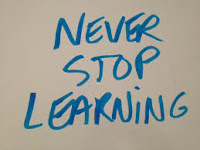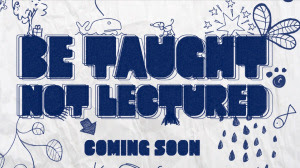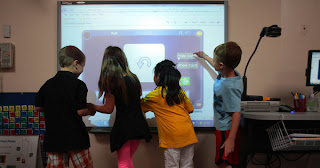
Are you thankful for the education girls AND boys are given in our country? You should be! I know that I am after watching the TED video on
Kakenya Ntaiya! I highly recommend everyone watch this video!
As a child growing up in Kenya, Kakenya Ntaiya was not promised an education past twelve years old. Her father was away working most of the time, and when he was home he was selling the crops her mother had worked on all year and drinking with his friends at a local bar. Her mother, her siblings and herself were to do exactly what her father demanded or the mother would be abused. She was arranged a husband to marry once she became a woman. When she was thirteen she was mutilated as a female, like the all of the other girls her age. Since her mother was denied an education, she emphasized how important an education was. Ntaiya told her father that she would go through with the “celebration” of becoming a woman if she could continue her education. He agreed.
Little did she know how her world would change! She went to high school in Kenya then received a scholarship to college in the United States. She went around to all of the men and collected enough money for her plane ticket to America. Once she got here, her eyes were opened to: SNOW, rights, laws and many other things that had been stolen from her back home. After receiving her Master’s, Ntaiya went back to Kenya to repay the community for helping her receive her education. She started an all girls school and not only kept 125 girls from being sexually mutilated, but helped them transform into educated young ladies with chance at life!
It is so important to realize how lucky we are to have our education handed to us. For me, it was known that I would attend school all the way through college. But, for others it’s not that simple. It’s amazing what you can do if you really want something and fight for it. In another TED video
Sugata Mitra emphasized how amazing it is to see what children can do if you give them certain atmospheres and tools. Once she made it to America, all it took for Ntaiya to be successful was an opportunity. We should teach our students to be motivated like she was and not just expect things to be given to you. We are truly lucky to live in this country and be given the education opportunities that we have.
 Jamie Risner
Jamie Risner Shukla Bose: Teaching One Child at a Time
I enjoyed the video “Teaching One Child at a Time”. In this video, Shukla Bose talks about how she started the Parkrma Humanity Foundation. This foundation helps the children in India who live in the slums get an education. Bose started by going to the slums and identifying houses where the children who would never go to school lived. She would then talk to the parents about sending their children to school. The parents wanted their children to go to school, because they wanted their children to have a better life, but the parents still had to be convinced that change was possible. The Parkrma Humanity Foundation started with one school that was located on the top of the building and had 165 children. The Foundation grew to four schools and a junior college, which all became successful because the schools taught the best curriculum possibly. They even taught English to get the students ready for a globalized world. I think it is great that the children are not just being taught basic skills but also skills that will help them have a better future. The main reason the schools became successful is that the schools and teachers operated under the idea of "one child at a time", which means they would educate students through school and into college by focusing on treating each child as an individual. I believe more schools should operate under this idea, because not every child learns the same or at the same speed. This idea means students are more likely to understand the material taught rather than just being passed along to the next grade.
Maggie Adkisson In the video "To This Day" ... for the bullied and beautiful Shane Koyczan raises his voice against bullying in a poem. As a child he was picked on and torn down everyday because of his weight. This video was made to raise awareness, put a stop to the cruelty, and most of all give hope to those who feel different and alone.
With his combination of words, music, and pictures the audience is sucked into the lives of the different characters. Feeling their pain with every word. Watching the constant insults break them down. Allowing the names to define them, because after hearing it for so long they are no longer able to see themselves as anything else. Watching this video is like watching a train wreck waiting to happen. It is dark and depressing, but you just cannot take your eyes off of it. My words alone cannot even begin to explain what a nerve hitting masterpiece Shane Koyczan has created. I believe it is only appropriate to share a couple verses.
she was eight years old
our first day of grade three
when she got called ugly
we both got moved to the back of the class
so we would stop get bombarded by spit balls
but the school halls were a battleground
where we found ourselves outnumbered day after wretched day
we used to stay inside for recess
because outside was worse
outside we’d have to rehearse running away
or learn to stay still like statues giving no clues that we were there
in grade five they taped a sign to her desk
that read beware of dog
to this day
despite a loving husband
she doesn’t think she’s beautiful
because of a birthmark
that takes up a little less than half of her face
kids used to say she looks like a wrong answer
that someone tried to erase
but couldn’t quite get the job done
and they’ll never understand
that she’s raising two kids
whose definition of beauty
begins with the word mom
because they see her heart
before they see her skin
that she’s only ever always been amazing
People says "kids are cruel" like it is an excuse not to stop bullying. That bullying is okay because it is coming from a child. We ignore how badly the bullied child's feelings are hurt and what the possible repercussions could be. This teacher just moved them to the back of the class hoping they will become invisible. Unfortunately, time and time again we have learned that ignoring the problem does not work. That is why we have kids bringing guns to schools to kill other students, harming their own bodies so that they can feel a moment of relief, and overdosing on pain killers just to get away from reality. By leaving them alone, without support and trying to make the them invisible we are doing nothing, but helping to create their own personal tragedy. We need everyone, not just children, to come to a realization of how their words and deeds can affect others. On his project website he says, "Schools and families are in desperate need of proper tools to confront this problem. We can give them a starting point… A message that will have a far reaching and long lasting effect in confronting bullying". His original video has received over 9,000,000,000 views on Youtube. I believe that we had found a plausible solution. If we could show our students something like this video, we could teach them what their words can do to others. Everyone has compassion and I think when they realize the outcomes a change will be made.





















